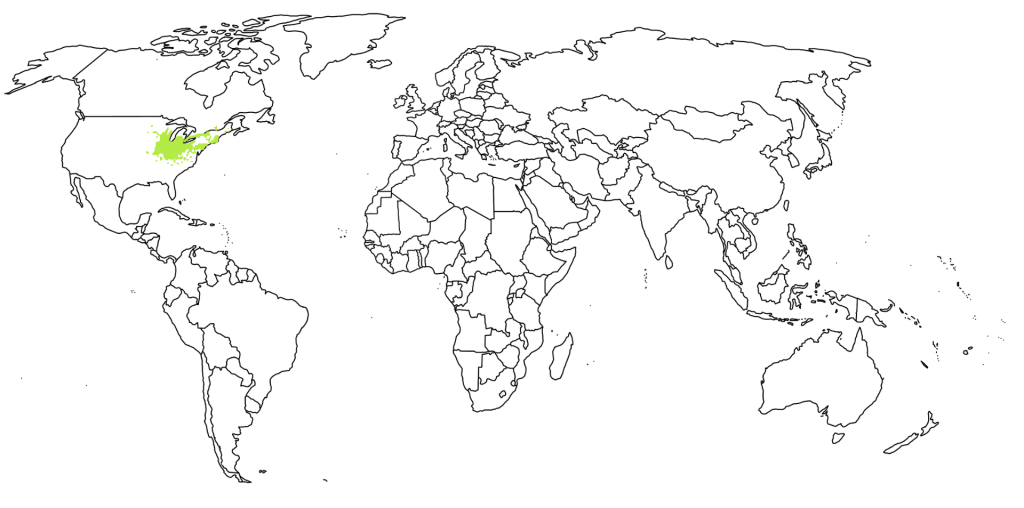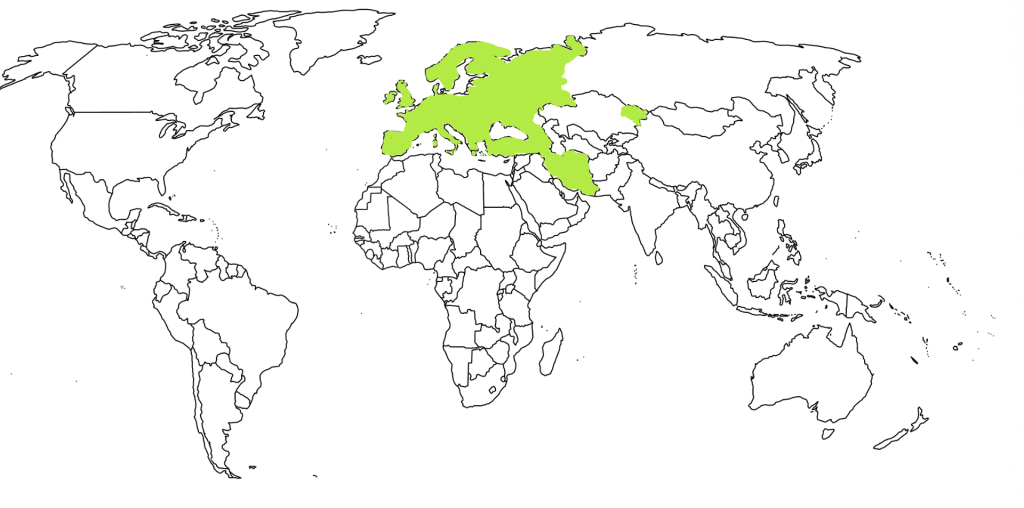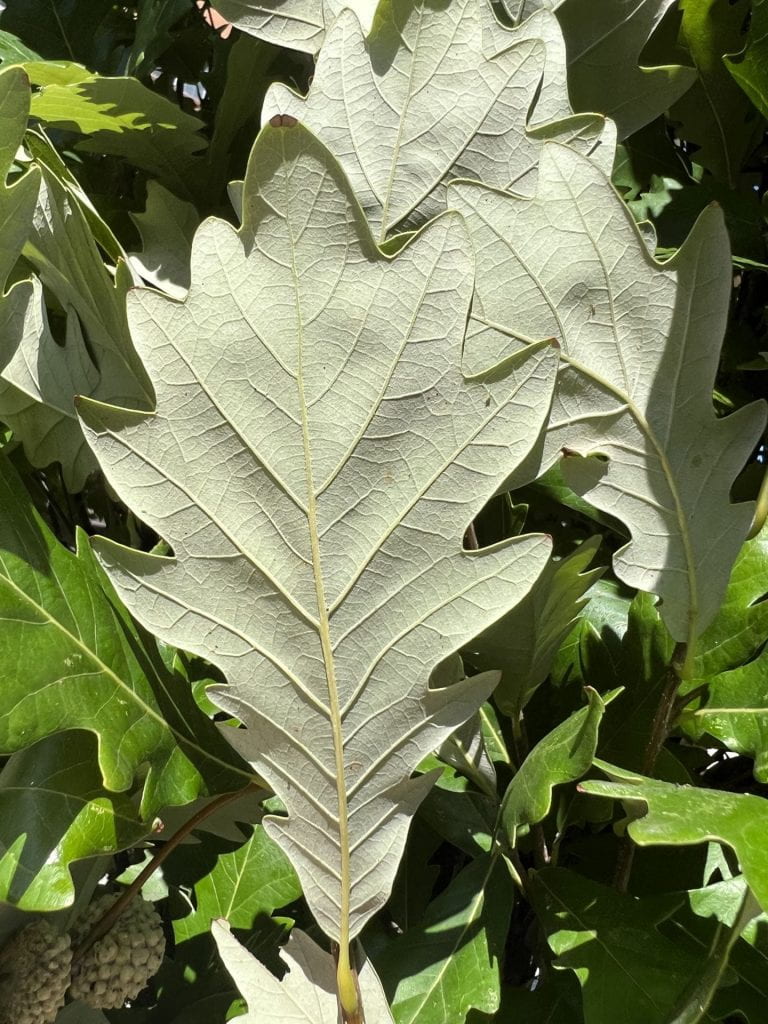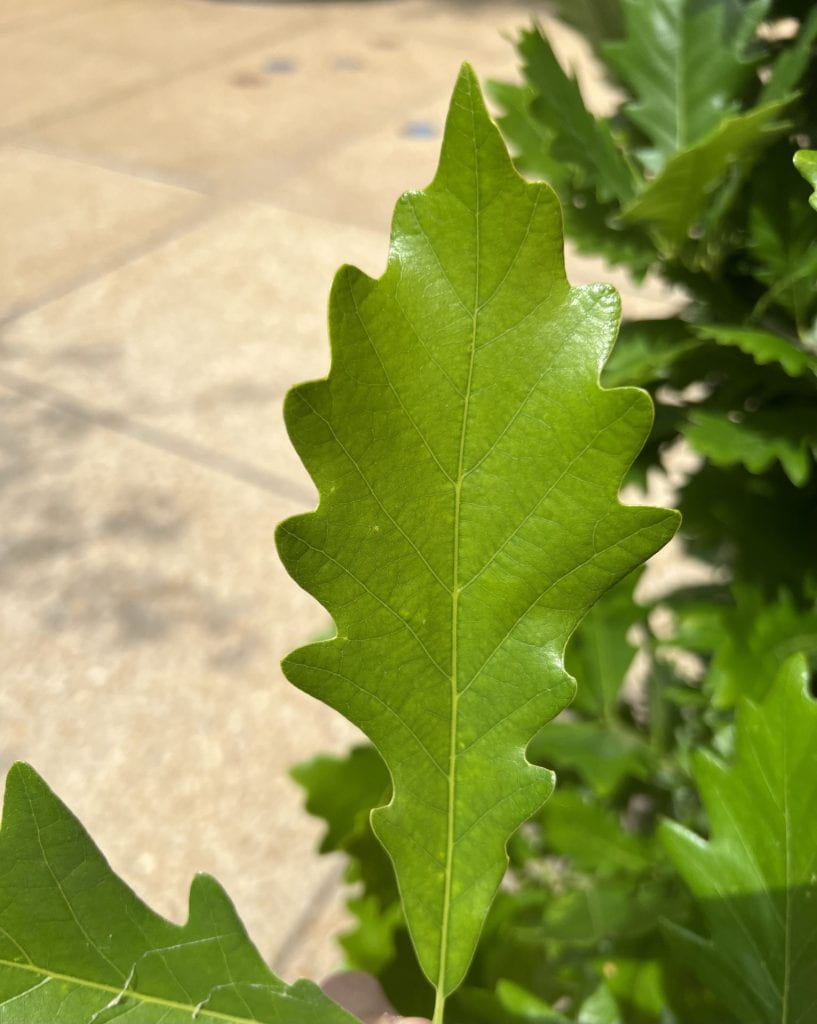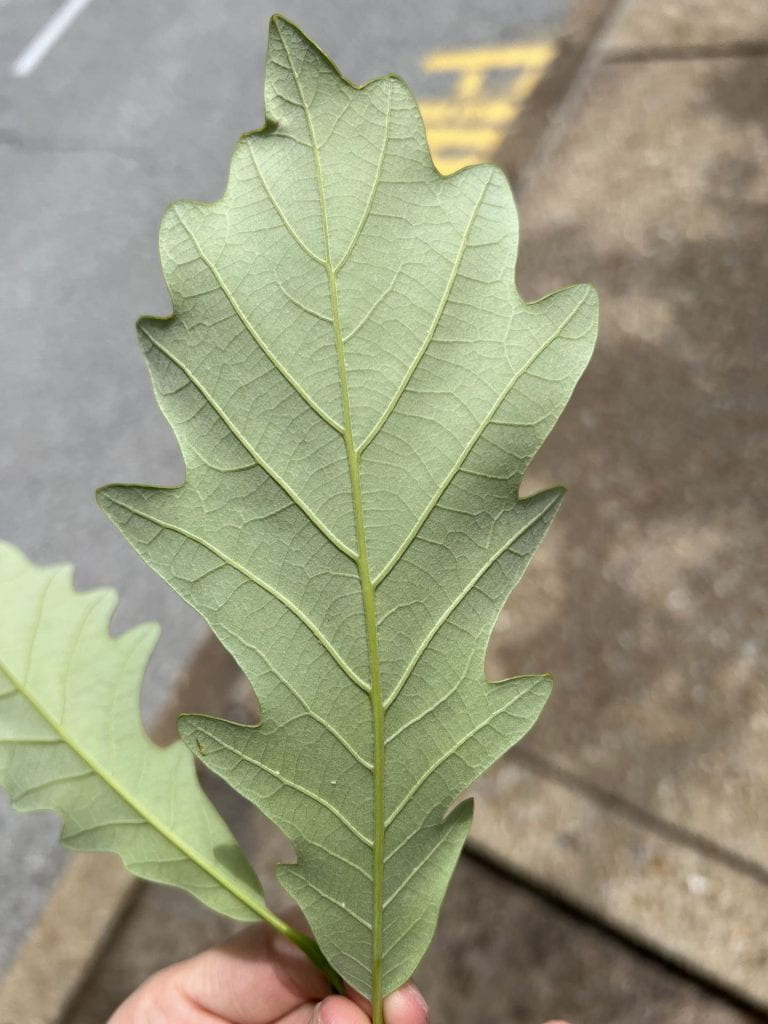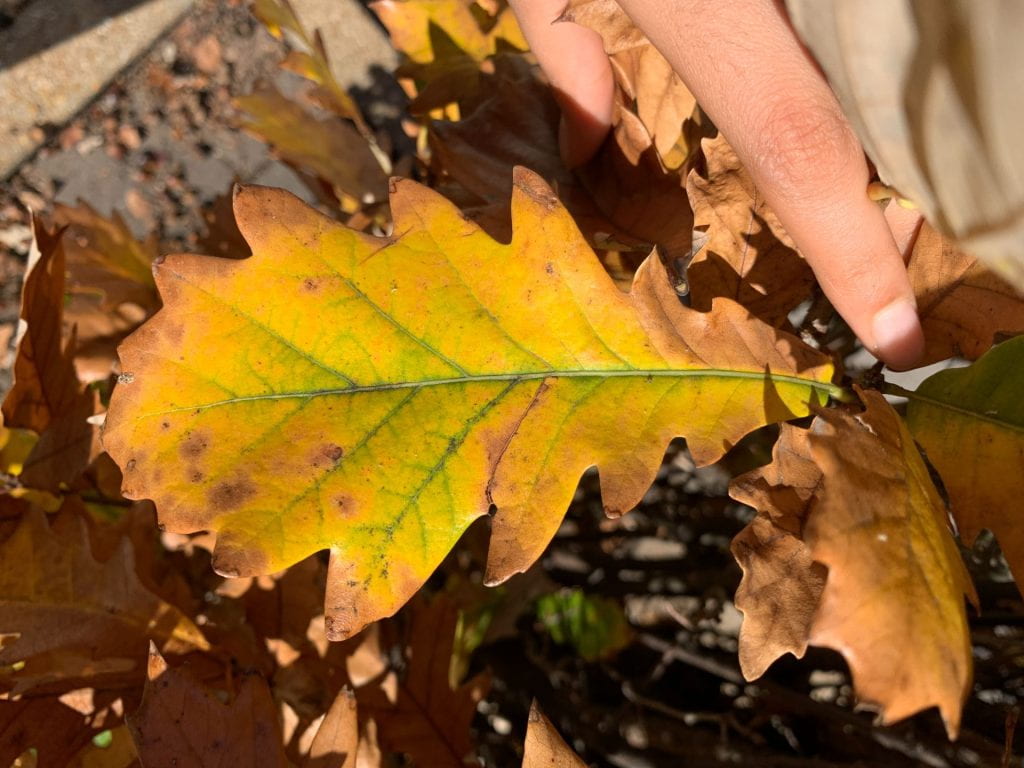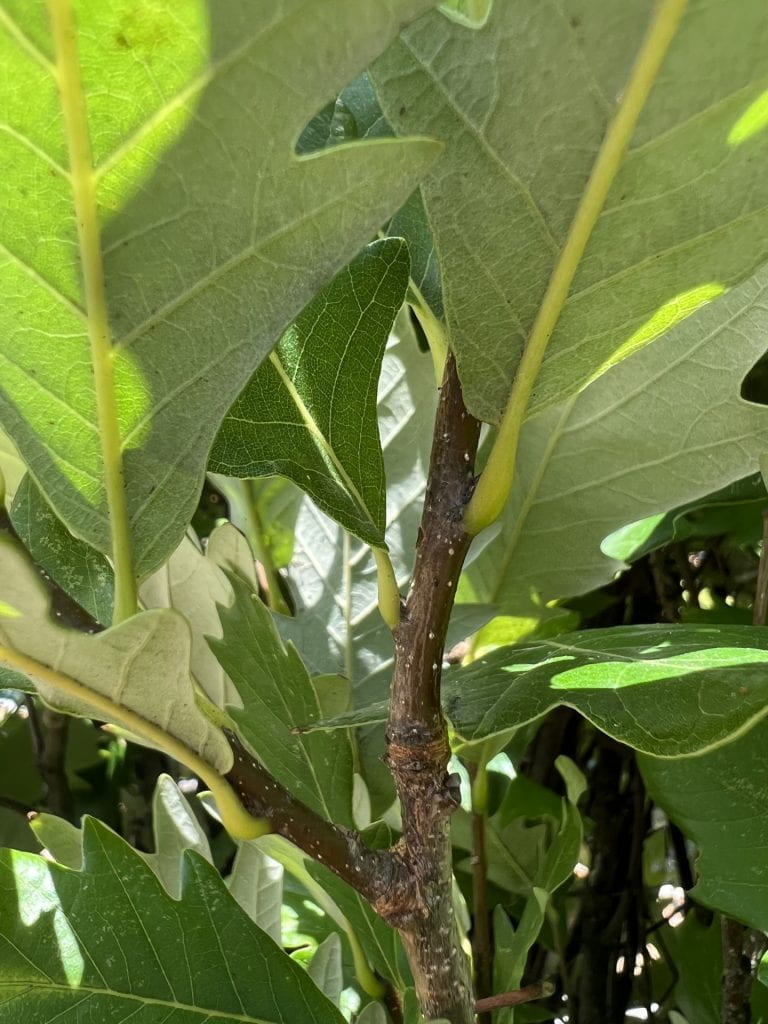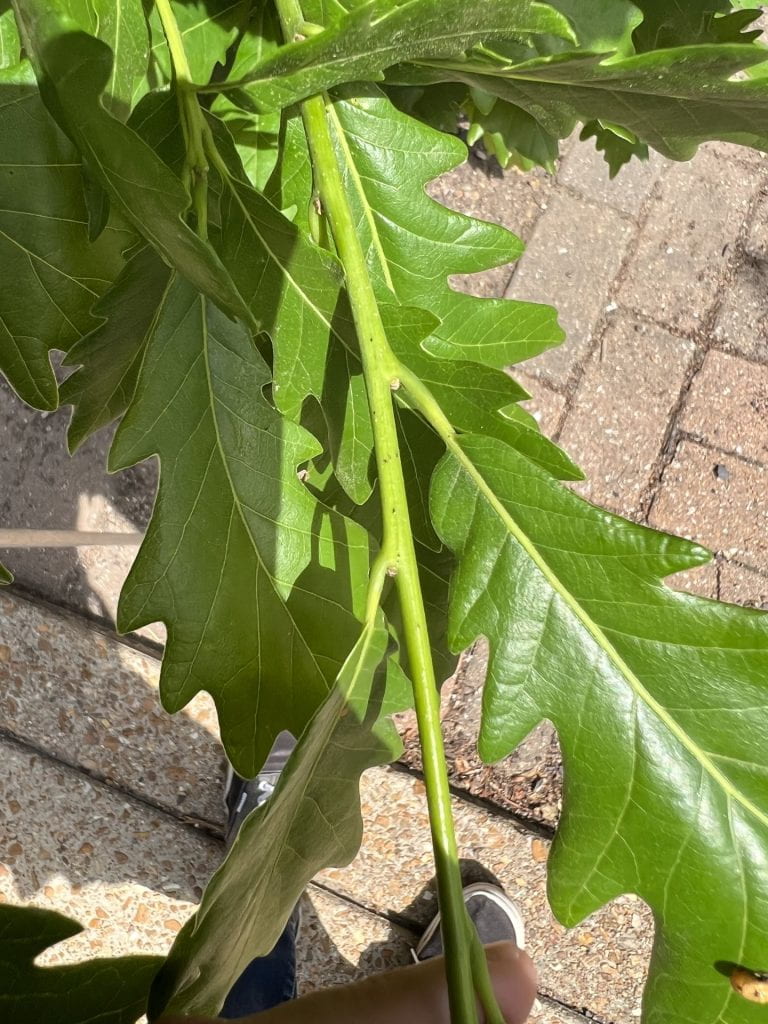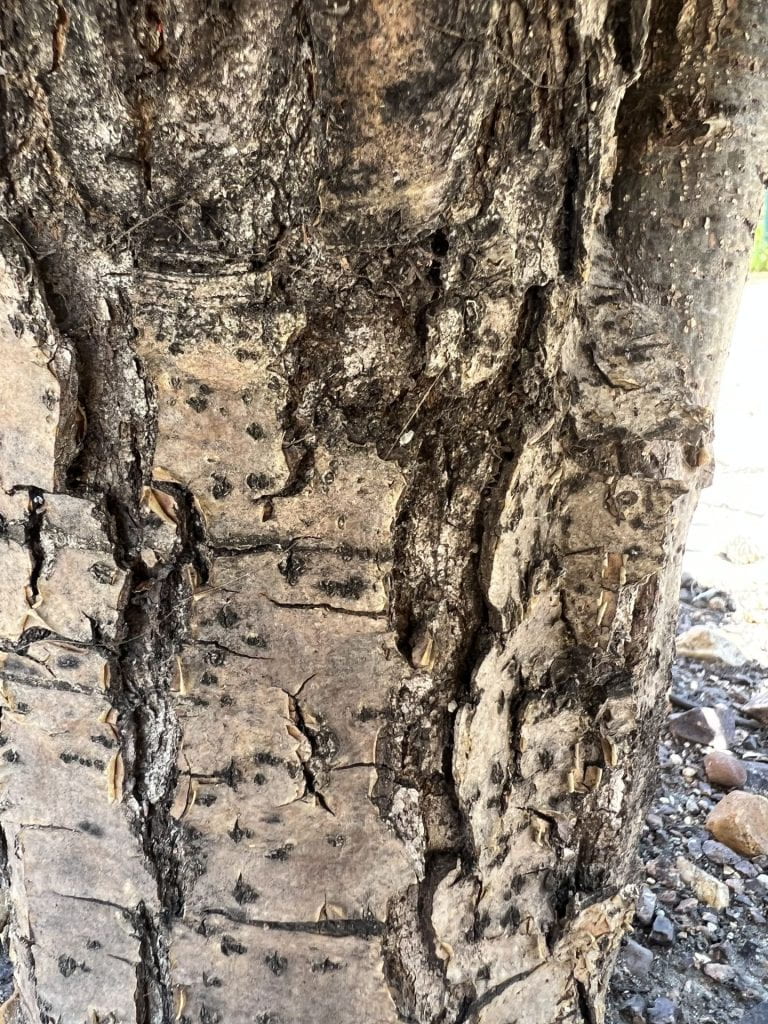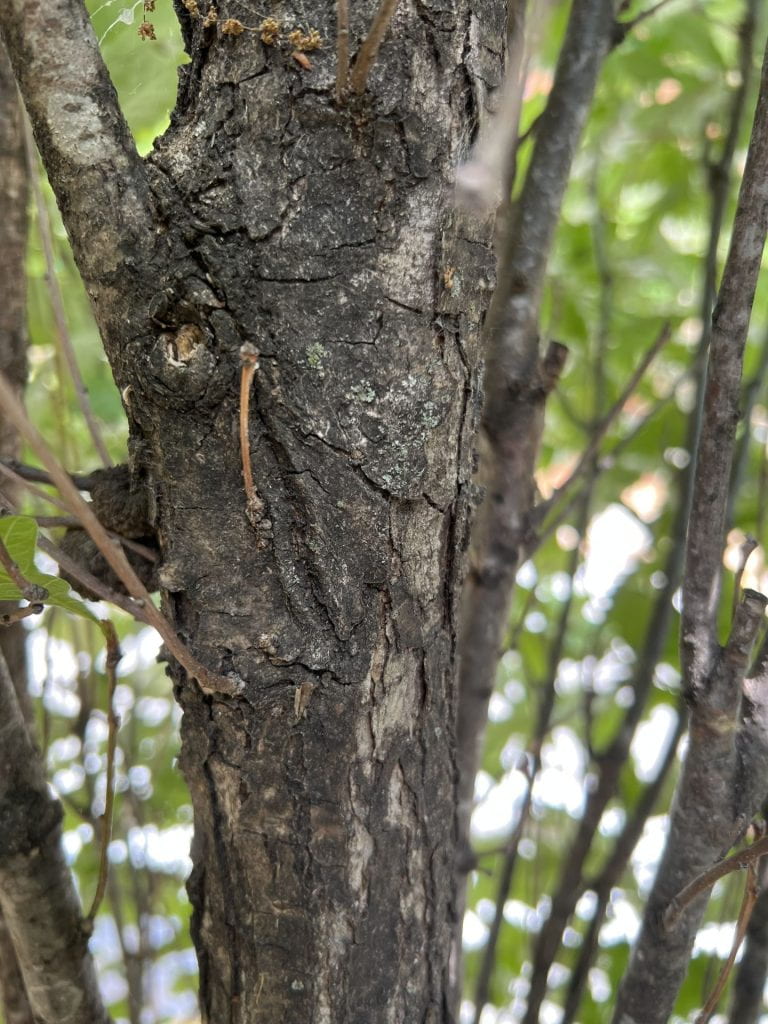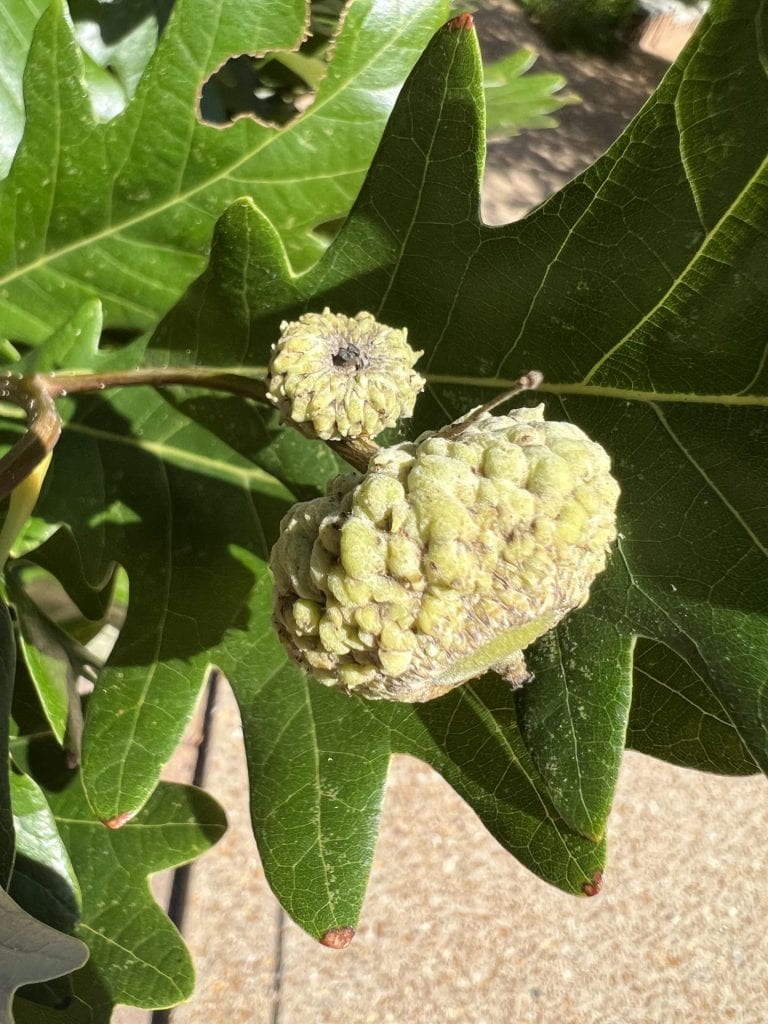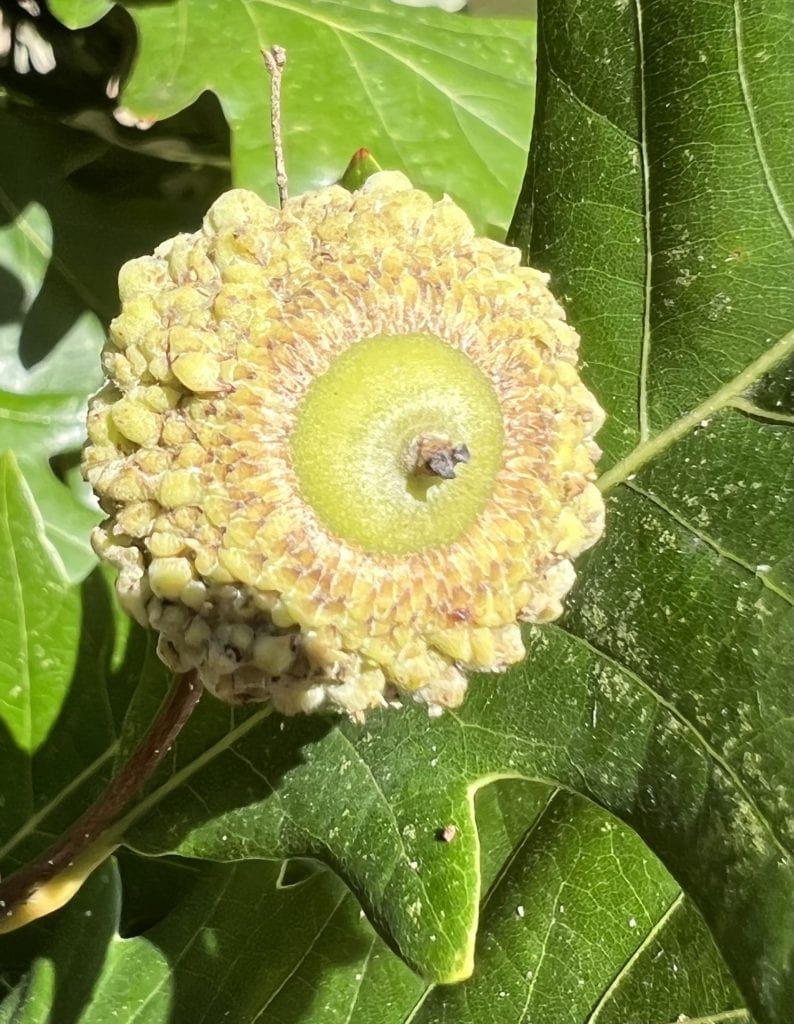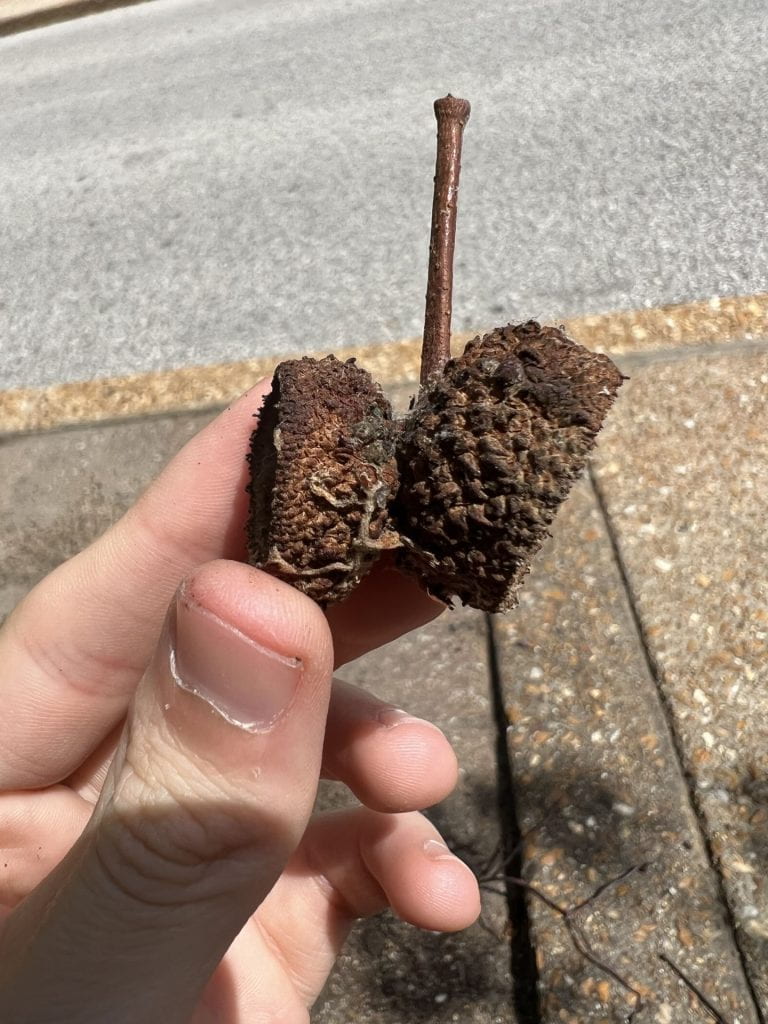Ware’s Oak ‘Kindred Spirit’
Arbor Walk #79, TreeKeeper ID #2226

Selected from a batch of chance seedlings collected from the campus of University of Missouri Columbia, this cultivar is a cross between the upright form of the English Oak (Quercus robur f. fastigiata) and the Swamp White Oak (Quercus bicolor). The tree grows to quite a large size, with a distinct columnar form and beautiful yellow fall color. It is also very resistant to pests and diseases like borers and powdery mildew, making it a resilient landscaping choice.
The Ware’s Oak is a member of the subgenus of white oaks. These oaks are distinguishable from other oaks from their smooth lobe tips (no awns), their hairless leaf undersides, and their lighter, flakier bark. The acorns of white oaks are also less tannic, meaning that they require less processing to become safe and palatable.
| Common Name | Ware’s Oak |
|---|---|
| Latin Name | Quercus x warei, Quercus robur f. fastigiata x Q. bicolor |
| Indigenous Name(s) | |
| Cultivar/Variety | ‘Nadler’ |
| Commercial Name | KINDRED SPIRIT |

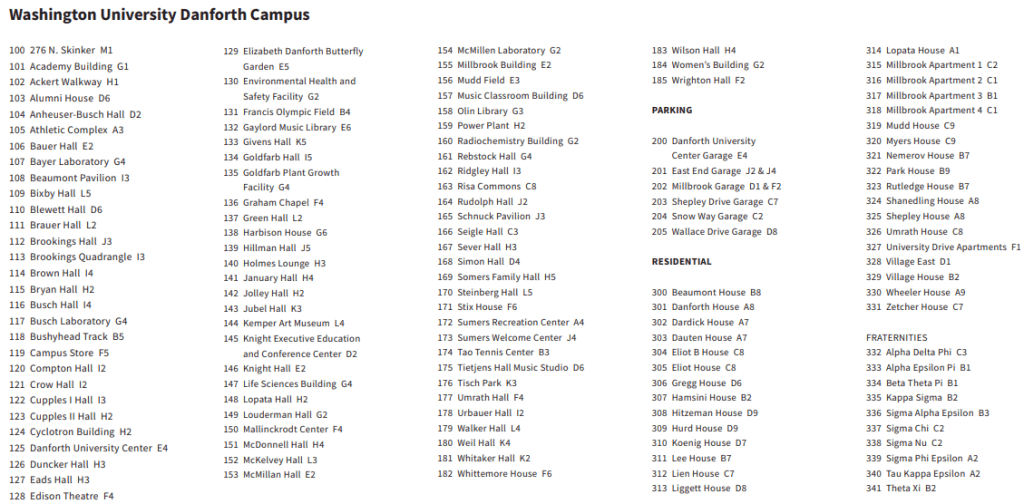
GPS Coordinates
N/A
Percent Concrete
N/A
Distance to Buildings
| Year | Close Building #1 | Close Building #2 | Close Building #3 |
|---|---|---|---|
| 2020 | Umrath House, 9.38 m | Zetcher House, 34.11 m | Lien House, 21.39 m |
Distance to Other Species
| Year | Close Species #1 | Close Species # 2 | Close Species # 3 |
|---|---|---|---|
| 2020 | Miyabe Maple, 8.15 m | Flowering Crabapple, 6.15 m | Serviceberry ssp., 9.62 m |
Standard Measurements
| Year | Height (m) | DBH (cm) | Caliper (m) | Crown Diameter N-S (m) | Crown Diameter E-W (m) | Average Crown Diameter (m) |
|---|---|---|---|---|---|---|
| 2020 | 4.3286 | 6.6 | N/A | 0.75 | 0.99 | 0.87 |
| 2023 | 5.17 | 7.9 | N/A | 1.15 | 4.5 | 2.825 |
Nests and Pests
| Year | Description |
|---|---|
| 2020 | Around 10 bagworms 1 leafroller caterpillar coccoon Light herbivory, including some potential activity from oak skeletonizer insects |
Leaf Identification
The leaves of the Ware’s Oak are simple (no leaflets), alternately arranged on the stem, pinnately veined, and lobed. There are numerous fingerlike lobes along the leaf margin; the lobing is not symmetrical. The leaf is dark green above and pale silvery-white below. The shape is obovate to elliptic
Twig and Bud Identification
The twig is dark brown with white lenticels (pores). The axillary buds are smaller than the terminal buds, which are brown and clustered.
Bark Identification
The Ware’s Oak has dark brown and plated bark, which can reveal a tan interior.
Fruit Identification
The fruit of the Ware’s Oak is an acorn. The acorn has a large warty-scaled cup that covers an ovoid nut. The acorns are often paired on stalks longer than the acorns themselves. The acorns mature in the fall.
Flower Identification
The flowers of the Ware’s Oak are monoecious (male and female flowers exist separately but on the same tree). The staminate (male) flowers are greenish hanging catkins (long, slender clusters of unisexual flowers), and the pistillate (female) flowers are in small, inconspicuous clusters on the leaf axils. The flowers bloom in the spring.
[photo forthcoming]

